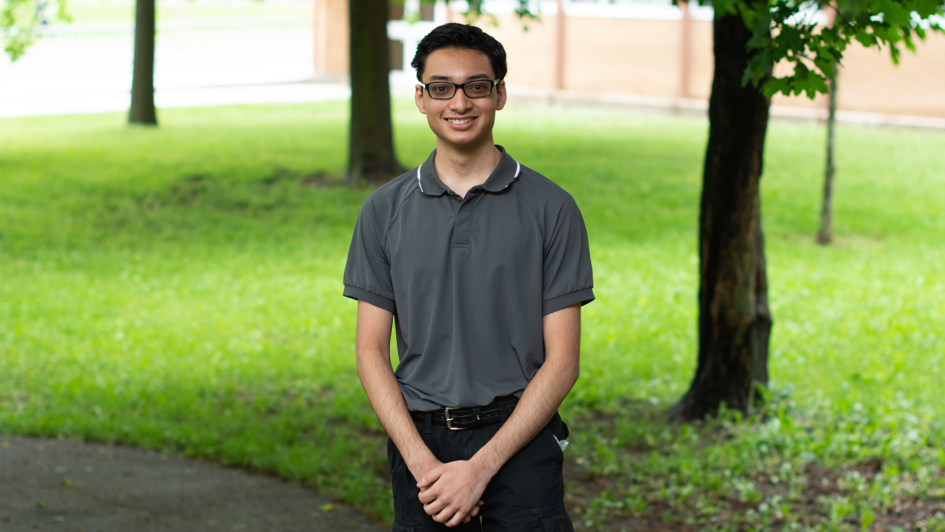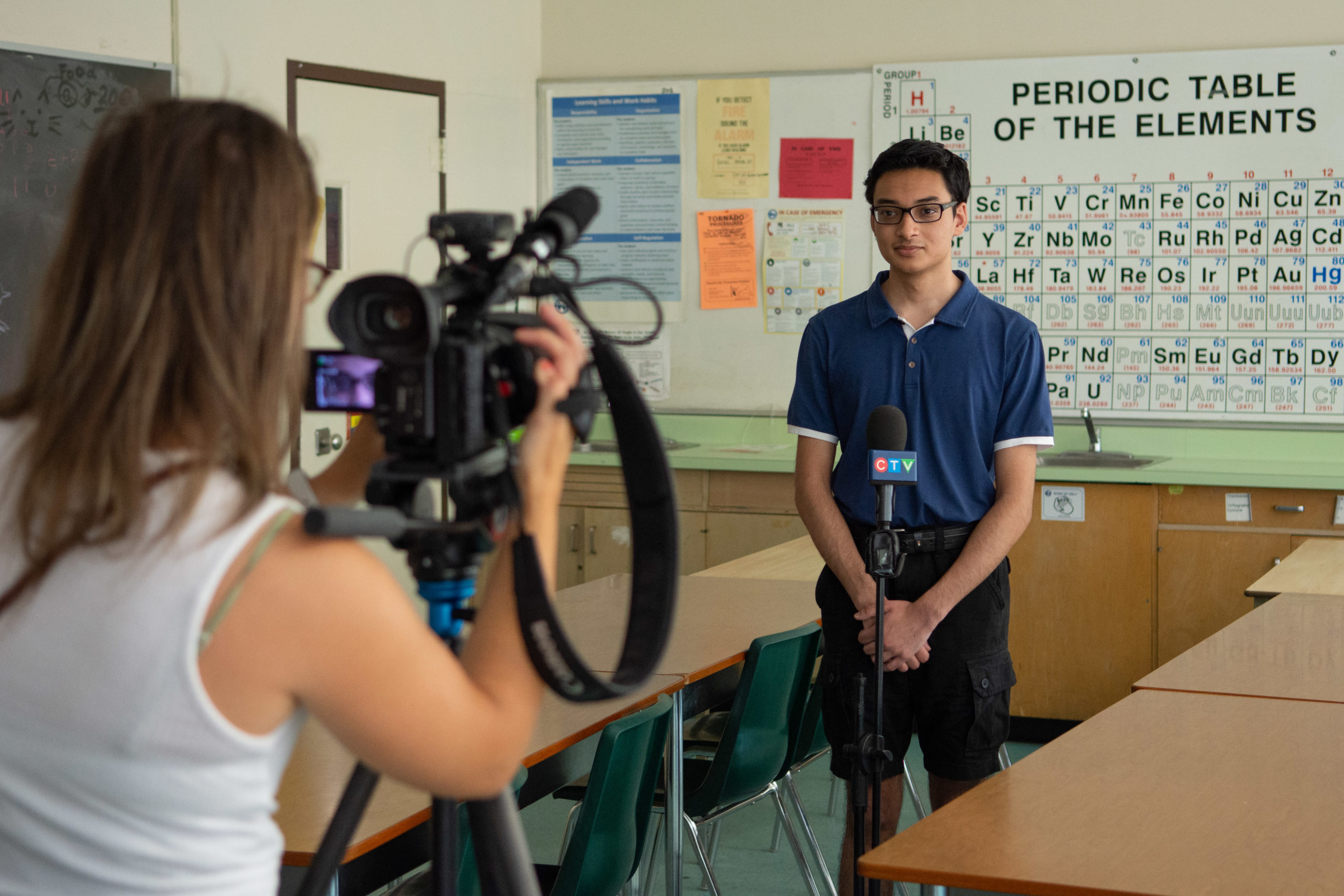
October 12th, 2022
“I can’t put it into words how grateful I am for those teachers at WCI.”
Neil Mitra has only been at university for a little over a month, but he’s already feeling successful, due in no small part to what he learned as a student in the Waterloo Region District School Board (WRDSB).
“It’s been lots of fun and I’m loving all my courses,” said Neil. “My first month here at UBC has been quite fruitful. I’m really looking forward to the next couple of months.”
Neil, who graduated from Waterloo Collegiate Institute (WCI) this past school year, is studying Engineering at the University of British Columbia (UBC). We caught up with Neil last year to talk about the multiplex cardiac testing device he is developing with his company, Mitra Biotechnologies.

Neil Mitra’s efforts were covered by CTV Kitchener: Waterloo teen invents low-cost solution to help identify heart attacks
Work continues on the device, as the company is now looking to raise funds to begin prototyping and testing with patient samples. Neil is optimistic, as the costs associated with testing their device are lower than typical medical technology.
“Our device is paper-based, so we get to cut down a lot of those costs in prototyping,” said Neil.
In August, they hit an important milestone. The nanomaterial in their paper-based device hit near centrifugation separation of solid blood products from whole human blood. This helps to demonstrate the effectiveness of their device that aims to revolutionize the speed with which heart attacks can be identified and treated.
“It’s been busy,” said Neil with a smile.
Though he hasn’t had much spare time to reflect, he has recognized how well his teachers prepared him for his post-secondary pathway.
“I can’t put it into words how grateful I am for those teachers at WCI,” said Neil. “Without them, university would be exponentially more difficult.”
Neil reminisced about how the time he spent in advanced placement math, calculus and physics classes gave him a leg up on his peers. For example, in his first year physics class, they are solving problems in three dimensions using matrices. This is familiar territory for Neil, thanks to Mr. Eaton at WCI, who taught this method for solving in two dimensions.
“We already learned that in high school, at WCI,” said Neil. “I feel pretty grateful for that.”
He credits Mr. Eaton, along with Mrs. McCarl Palmer, Ms. Banit, Mr. Brown and Mr. Cressman for helping him to be prepared for the challenges of post-secondary education.
“Taking all my learnings from high school and applying it here, has been quite fun,” said Neil.
What he took with him is more than just theoretical knowledge – though his bookshelf is now full of thick university textbooks, his high school notes have a special place on the shelf.
“I knew that it would be helpful for university.”
Did you miss the original story? Student Aims to Democratize Healthcare and Testing
Categories: Feature Tags: innovation · Invention · Neil Mitra · Physics · science · technology · Waterloo Collegiate Institute (WCI)

